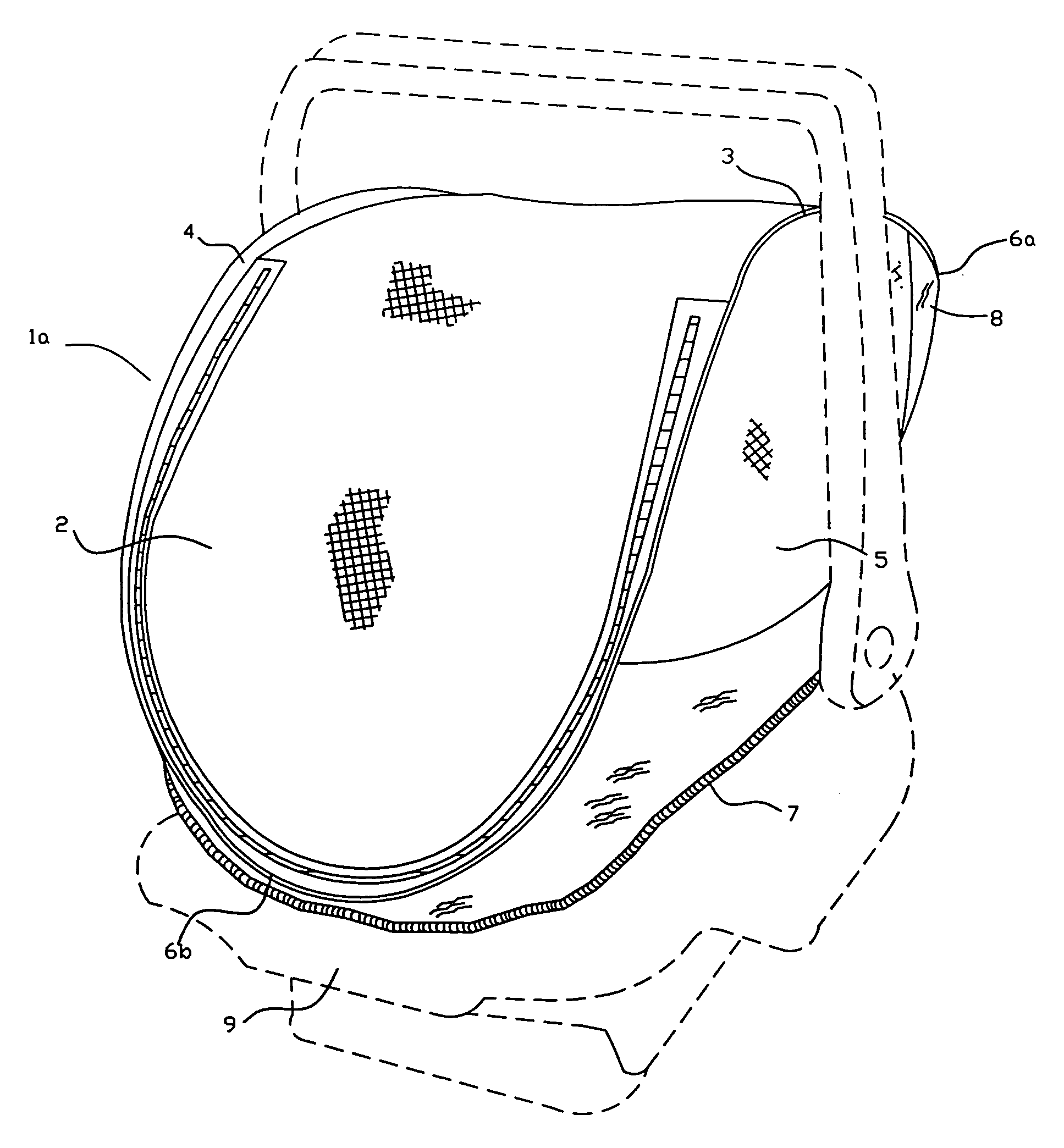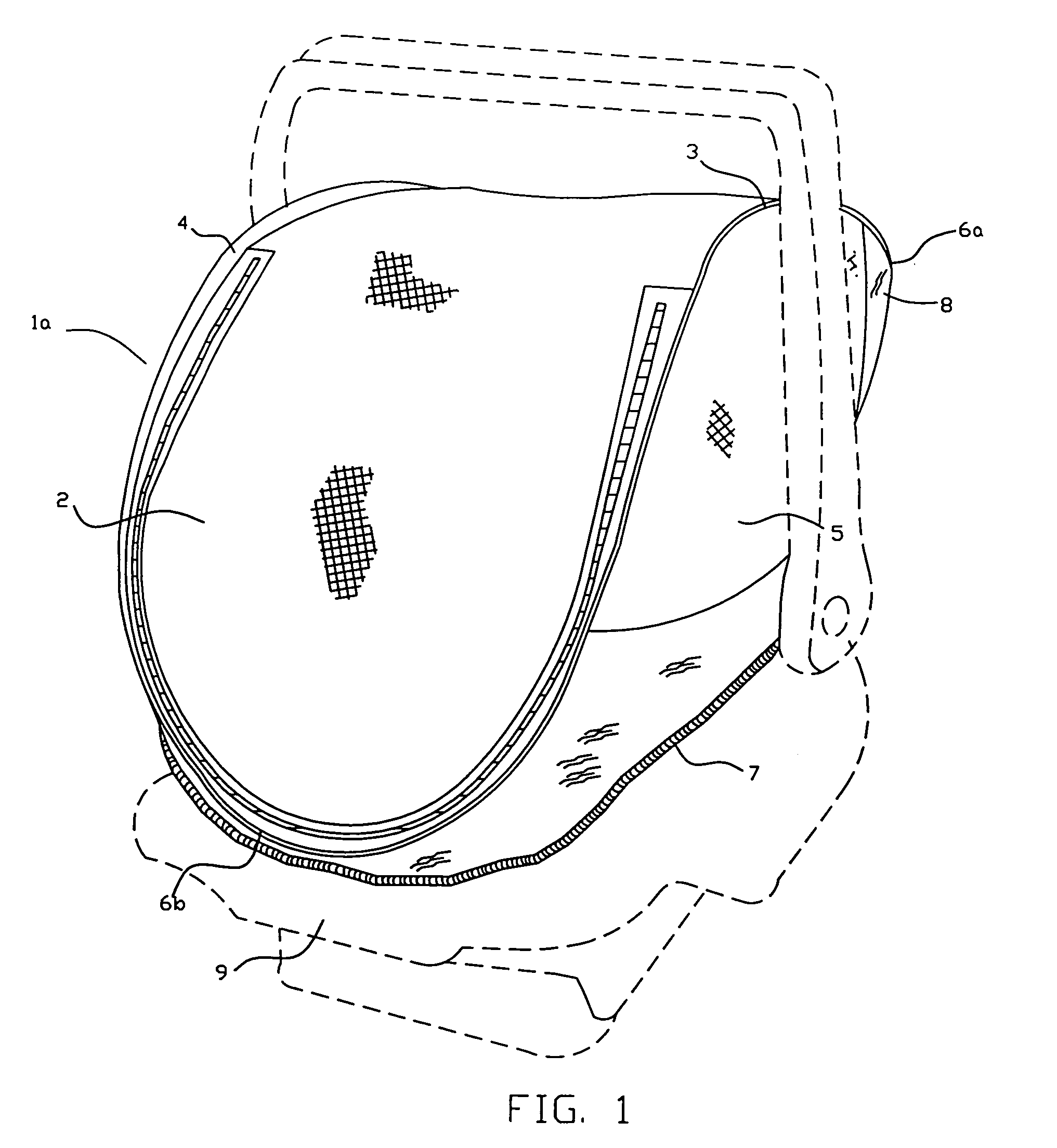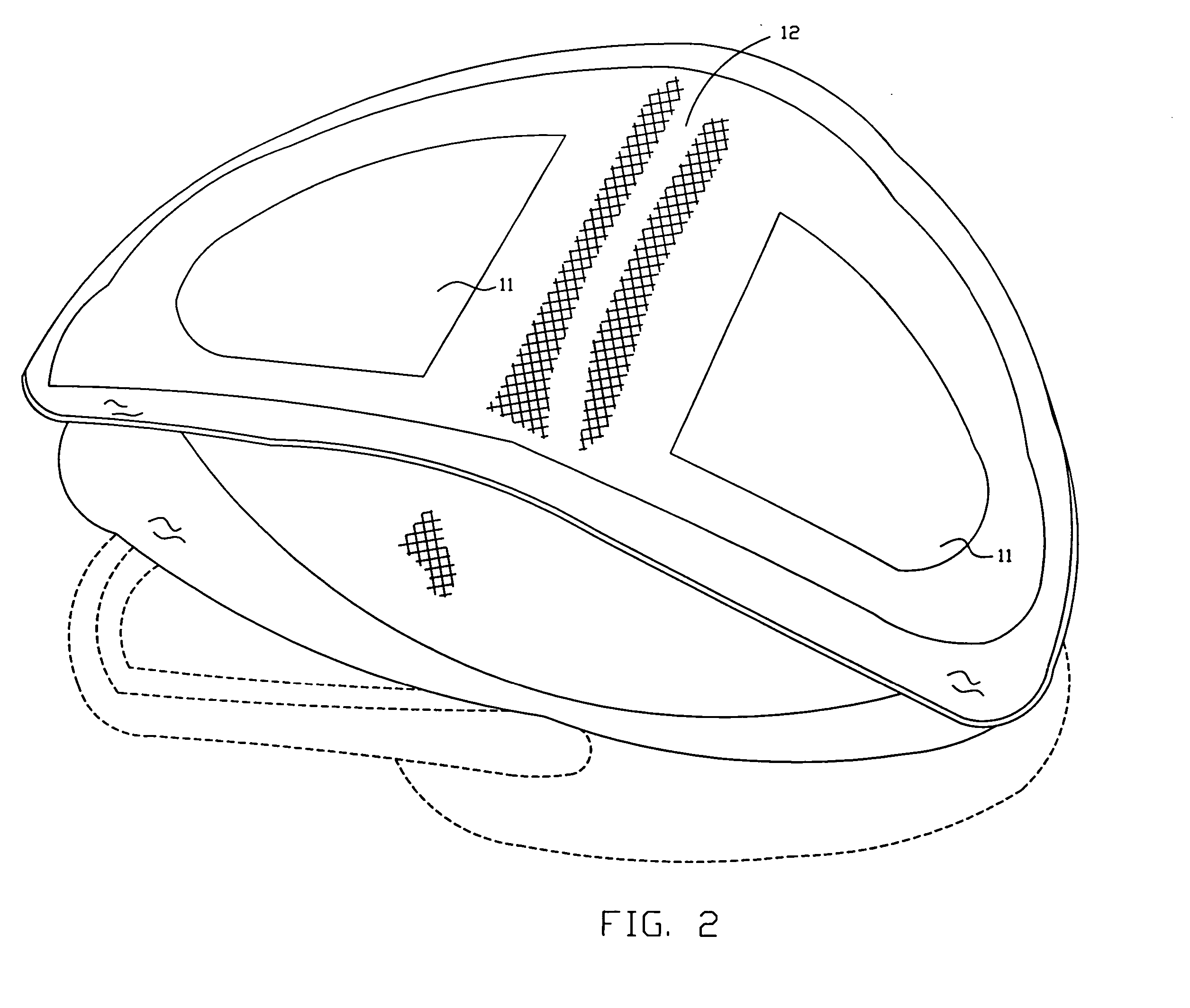Collapsible cover for seating unit
a seating unit and cover frame technology, applied in the field of seating devices, can solve the problems of limited collapsibility, shade does not disclose rain or insect protection, sun visors disclosed are not intended for interchangeability with incompatible or dissimilar seats, etc., and achieve the effect of stable attachment of the cover frame member and stably fastening
- Summary
- Abstract
- Description
- Claims
- Application Information
AI Technical Summary
Benefits of technology
Problems solved by technology
Method used
Image
Examples
first embodiment
[0082]FIG. 2 illustrates a minimal configuration of the first embodiment, which has a top opening to allow for access to the occupant of the seat. In the embodiment of FIG. 1, two top openings 11 are provided with a center web therebetween to help in maintaining stability which is further enhanced by means of reinforced side panel membranes. In the preferred embodiment, FIG. 3 illustrates an example of a top opening 13, which is closable by means of zipper flap 14 and optionally tied back by means of a tie 15 or other such methods as is known to those familiar with the art. In another embodiment, FIG. 4 shows the top opening 13 closable by means of elasticized flap 16 and secured from inadvertent removal by means of button or snap 17 at the head 6a and foot 6b. The ability to open the cover wide enough to allow access to the occupant of the protective cover is afforded by the large minor axis, or width of the elliptically shaped ceiling membrane, due in part to the frame member loop...
third embodiment
[0090]Referring to FIG. 5a, the head 6a of the frame member 3 is secured to the carriage head position 8 by means of an elasticized strap 19. This elasticized strap 19 can be easily slid around the carriage pusher posts 26 thereby effectively clamping the head 6a of the frame member 3 against the carriage pusher posts 26. A friction padding 27 made of rubberized material or the like can be effectively employed along an appropriate length of the head 6a in order to minimize slippage of the frame member 3 against the pusher posts 26. The elasticized strap 19 can be permanently stitched to the head 6a of the frame member 3 or fastened by means of a snap or button 17 or other such method as is common to those familiar with the art. The elasticized strap 19 can be replaced by an adjustable webbing material, cording, tube clips, clamps or other such means that achieves the desired clamping effect. Although not depicted, these features are equally applicable to embodiment second as to the
[...
PUM
 Login to View More
Login to View More Abstract
Description
Claims
Application Information
 Login to View More
Login to View More - R&D
- Intellectual Property
- Life Sciences
- Materials
- Tech Scout
- Unparalleled Data Quality
- Higher Quality Content
- 60% Fewer Hallucinations
Browse by: Latest US Patents, China's latest patents, Technical Efficacy Thesaurus, Application Domain, Technology Topic, Popular Technical Reports.
© 2025 PatSnap. All rights reserved.Legal|Privacy policy|Modern Slavery Act Transparency Statement|Sitemap|About US| Contact US: help@patsnap.com



